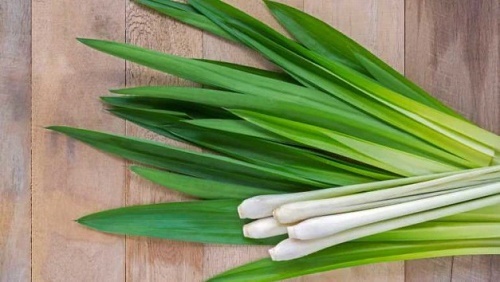

By Adebukola Aluko
Lemongrass (Cymbopogon citratus), also called sweet rush, species of oil grass in the family Poaceae. At a distance, clusters of lemongrass in their native habitat look deceptively plain. Long skinny leaves of an unassuming green fan out from the stem, yet they release at a single touch, a profuse lemon aroma that has made this pungent plant a staple of kitchens across South East Asia.
Lemongrass is one of approximately 55 other species of grasses in the Poaceae family of grasses. Of these multiple varieties, the two most popular ones are Cymbopogon citratus and Cymbopogon flexuosus.
Lemongrass is native to tropical regions such as Africa, Asia, Southeast Asia, Australia, and Oceania where it has been used traditionally for medicinal, cosmetic and culinary purposes.
The plant is also native to Sri Lanka and South India but now grows in many countries around the world. The plant’s stalks are a common ingredient in Asian cooking, but it is also possible to brew lemongrass to make tea.
The plant has long leaves that are similar to those of seagrasses. While an estimated 55 species of lemongrass exist, only the East Indian and West Indian varieties are suitable for use in cooking.
The Lemongrass herb has stalks that are fibrous and smell much like lemons. In essential oil, the scent of Lemongrass is fresh and light with a hint of lemon.
Lemongrass is commonly taken orally, applied directly to the skin, or inhaled as aromatherapy for many different conditions. But there is limited scientific research to support any of its common uses.
In food and beverages, lemongrass is used as a flavouring. For example, lemongrass leaves are commonly used as “lemon” flavouring in herbal teas.
In manufacturing, lemongrass is used as a fragrance in deodorants, soaps, and cosmetics. Lemongrass is also used in making vitamin A.
Health Benefits of Lemon Grass Tea
Lemongrass tea may have many benefits, including relieving anxiety and preventing infection, it also contains the inflammation-fighting compounds
Inflammation is a factor in many adverse health conditions, including pain and heart disease. As such, lemongrass tea could be a beneficial drink for people to incorporate into their diet.
Below are the benefits that may result from drinking lemongrass tea.
1. Relieving Anxiety
Many people find sipping hot tea to be relaxing, but lemongrass tea may offer further anxiety-reducing properties.
According to the Memorial Sloan Kettering Cancer Center, smelling lemongrass may help people with anxiety.
2. Lowering Cholesterol
According to the Journal of Advanced Pharmaceutical Technology & Research, consuming lemongrass extracts appears to lower cholesterol in animals.
The study notes that the reaction is dose-dependent. This means that larger quantities of lemongrass might lower cholesterol further.
3. Preventing Infection
According to the Memorial Sloan Kettering Cancer Center, study results suggest that lemongrass may have some infection-preventing capabilities.
For example, the herb seems to reduce the incidence of thrush, a fungal infection that commonly affects people with weakened immune systems, such as those with HIV.
4. Boosting Oral Health
In many countries where the lemongrass plant is native to the area, people pluck lemongrass stalks and chew on them as a way to improve dental health and keep the mouth feeling clean.
The Food Chemistry journal published a study confirming these findings.
5. Relieving Pain
According to some studies, lemongrass may be able to block pain. This means that drinking lemongrass tea could potentially help to prevent a person from sensing pain.
6. Boosting Red Blood Cell Levels
The results of a study suggest that drinking lemongrass tea infusions daily for 30 days can increase haemoglobin concentration, packed cell volume, and red blood cell count in the body.
7. Relieving Bloating
Drinking lemongrass tea can have diuretic effects, which means that it stimulates the kidneys to release more urine than usual.
8. Reduces Fever
Due to its ability to reduce fever, Lemongrass earned the name “fever grass” in some cultures.
9. Stimulates the uterus and menstrual flow,
10. Packed with Antioxidant properties.
Lemongrass Tea Recipe
Here’s how you can make lemongrass tea at home:
Ingredients:
- 4 cups of water
- 1 cup of lemongrass
- 1 tbsp honey
Follow the instructions:
- Rinse fresh lemongrass with water. After cleaning, cut them into small pieces and grind or blend a little.
- Place a saucepan on heat, pour water, and bring it to a boil.
- Add small pieces of lemongrass into the water, and let it boil for 10 minutes.
- After the water is boiled, you will notice lemongrass leaves fade. Strain the tea and serve hot.
- Lastly, add honey to it to sweeten it.
So, sit back and enjoy hot lemongrass tea!
Subscribe to our Telegram Channel and join our Whatsapp Update Group
P s sandhu says:
Very useful information for all